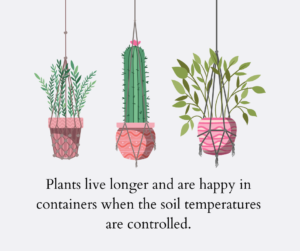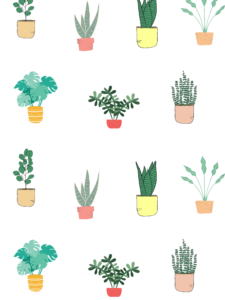Everything you need to know about creating a houseplant haven.
By May
Have you been thinking about surrounding yourself with a sea of greenery?
You’re not alone; according to the Consumer Houseplant Report of 2021, who found the appeal of houseplants increased from 2019 to 2021 in a very big way.
In fact, the study finds the need to bring more life into our space is widespread and does not contain a profile for a typical buyer.
In fact, the houseplant community might be one of the few groups marketers cannot pin down for a stereotypical buyer.
What is it about owning plants that makes us feel more connected?
The Benefits of Caring for a Plant
The study found several factors that prompted people to buy one or more houseplants.
- Plants improve the air quality in your space
- Caring for a plant makes you happier
- Watching your plant grow and succeed promotes happiness
- Owning plants can help you be more social
- People enjoy looking at plants in their living spaces
We’ve heard about gardeners who relieve stress by digging in the dirt every day.
Though the growing environment is not the same, science has explored the connection between happiness and those who care for their houseplants.
What is a House Plant?
The difference between a houseplant and an outdoor plant is the plant’s tolerance for living in certain temperatures.
Outdoor plants survive the elements and climate of whatever zone the plant thrives in.
With an indoor plant, the plant’s environment is controlled.
There are so many variations of houseplants, and you’ll want to do some research before choosing one to care for.

Best Plants for Beginners
If you’re about to build yourself a plant kingdom of your own, do yourself a favor by watching this YouTube video from Lucrecer Braxton.
I think it’s one of the best resources for discovering your beginner plant style.
She provides care, growing pattern info, and lightning requirements in under five minutes.
Five Tips To Keep Your Houseplants Thriving
1. Water Your Plants
Remember to water your plant according to instructions. Some plants require very little water, and others will need to keep a weekly watering schedule.
There are several good online resources, like this one at BHG.com.
Another good idea is to ask the sales clerk at the plant store. Plant lovers love to share knowledge and even seem excited when they can talk to a beginner.
2. The Right Amount of Sunlight
Just like in outdoor gardening, there will be indoor plants that need more direct sunlight. Likewise, some can thrive with very little natural light.
When you’re browsing, check the tag on the plant. The label will typically indicate how much light the plant needs.
TIP: Before bringing your plant home, it’s important to know what room your plant will live in and how much light comes in throughout the day.
Also to consider is the room temperature in which your plant will live. For more on that, check out the tips at The Spruce.

3. Feed Your Plants
Did you know your plants need food too?
The “food” is fertilizer and keeps the soil nutrient-rich. When the soil is balanced and fed, the roots will be strong, and the greenery will thrive.
Plant food is typically used every six months and recommended at the beginning of Spring and at the end of Summer.
Although there are various types, most plant owners find Miracle Grow to work fine. You can find plant food anywhere they sell plants or soil.
4. Re-potting Your Plant
If you notice there hasn’t been any new growth for several weeks, the roots may be overcrowded in their container or need a change of soil.
One of the tell-tell signs your plant needs a bigger pot is the root. The roots are growing through the drainage, or circling roots can be easily seen through the top of the soil.
If you notice either of these signs, your plant is telling you it’s time to buy a larger pot and transfer the plant.
In this case, you will need new potting soil and a larger pot—no more than 2′ larger than its current pot.
**TIP- Re-potting should be done in the Spring with the growing season.
5. Plant Swap
Many communities now host a plant swap when two or more people get together and trade plants.
Swaps are ideal if you have a plant not thriving in your home due to temperature or sunlight or you cannot remember to water it.
You would show up to swap with your plant and trade with someone for your plant.
Sometimes, plants are given away without receiving a trade in return.
Look for announcements online in Facebook Groups or ask your local plant store.

Conclusion
Did you buy several plants with the hopes of improving your space but find yourself overwhelmed by dying greenery a few months later?
If you did and still don’t know how to take care of your plants, this easy guide should put you on your way to lasting greenery.
If you’re considering adding a few houseplants to your home, you’re in excellent company. As mentioned before, the plant community is enthusiastic about sharing joy, tips, and fun.
More Resources For You:
Instagram to follow:. @soulsistaplants
A website I like- Proven Winners (Leaf Joy is their houseplant brand)
Helpful Apps- Planta (Keep Your Plants Alive)
YouTube Channel- another good resource for all things plants is Becca De La Plants
Please share this article with others and leave a comment if you find it helpful. Contact us to discuss your project if you need content for your website, a newsletter, or blogs like this.





Nice post.
Thank you!